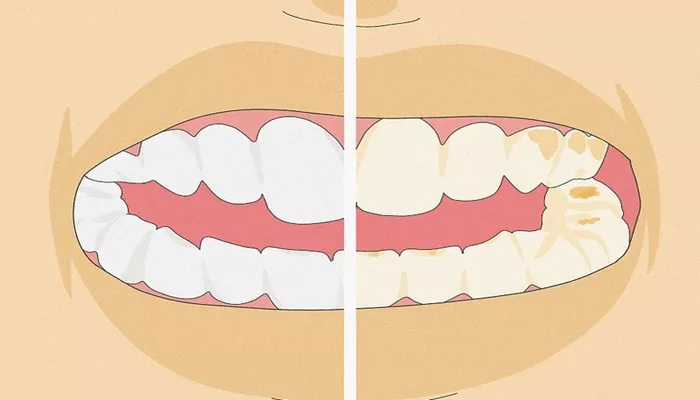Teeth whitening has long been a common pursuit among individuals seeking to improve their appearance. Over time, advancements in technology have led to the development of various teeth whitening products and methods. Among these, non-peroxide tooth whitening products have gained popularity due to their promise of achieving a brighter smile without the use of harsh chemicals like peroxide. However, the question arises: is non-peroxide tooth whitening truly safe? This article aims to provide a detailed, logical, and scientifically-grounded exploration of this topic.
Understanding Non-Peroxide Tooth Whitening
Non-peroxide tooth whitening products primarily rely on ingredients other than peroxide to brighten teeth. These products can range from whitening toothpastes, strips, gels, to more advanced home kits. The primary mechanism of action for these products often involves the use of abrasive agents or micro-particles that gently polish the tooth surface, removing stains and discoloration.
In contrast, peroxide-based products, such as those used in dental clinics or higher-concentration home kits, work by penetrating the tooth enamel and breaking down stain compounds through oxidation. Peroxide is a powerful bleaching agent that can significantly lighten teeth but also poses risks if used improperly or excessively.
Safety Concerns with Non-Peroxide Whitening
Abrasive Effects
Non-peroxide whitening products often contain abrasive agents that physically scrub off stains from the tooth surface. While effective in removing surface stains, prolonged or excessive use of these products can wear down tooth enamel, leading to sensitivity and potential long-term damage. Enamel, the hard outer layer of teeth, is crucial for protecting the underlying dentin and nerves from sensitivity and decay.
Gum Irritation
The abrasive particles in non-peroxide whitening products can also irritate the gums, causing inflammation and discomfort. If the gums are repeatedly exposed to these harsh agents, they may become more susceptible to infection and other oral health issues.
Inconsistent Results
Unlike peroxide-based products, non-peroxide whitening methods often provide less consistent and less dramatic results. Surface stains may be removed, but deeper stains or discoloration caused by internal factors (e.g., tetracycline use during tooth development) may remain unaffected. This can lead to dissatisfaction among users who expect significant whitening results.
Potential Allergies
Some non-peroxide whitening products may contain ingredients that can cause allergic reactions in certain individuals. Ingredients such as flavorings, preservatives, or other additives may trigger symptoms such as redness, swelling, or itching in the mouth or on the gums.
Comparing Non-Peroxide to Peroxide Whitening
To fully understand the safety of non-peroxide tooth whitening, it is essential to compare it with peroxide-based methods.
Efficacy: Peroxide-based products are generally more effective in whitening teeth due to their ability to penetrate the enamel and reach deeper stains. Non-peroxide products, on the other hand, are limited to removing surface stains.
Risk of Damage: While both types of products can potentially damage tooth enamel and gums if used improperly, peroxide-based products pose a higher risk due to their stronger bleaching power. However, when used under the supervision of a dentist and following proper instructions, peroxide whitening can be done safely.
Sensitivity: Both types of products can cause tooth sensitivity, but peroxide-based products may cause more severe sensitivity due to their deeper penetration into the tooth structure. Non-peroxide products, with their gentler action, may cause less sensitivity but still pose a risk if overused.
Professional Perspective on Non-Peroxide Whitening
Consultation with a Dentist: Before using any teeth whitening product, it is crucial to consult with a dentist. A dentist can assess your oral health, identify the causes of tooth discoloration, and recommend the most appropriate whitening method based on your individual needs and risks.
Understanding Ingredients: When choosing a non-peroxide whitening product, carefully read the label to understand its ingredients. Avoid products with harsh abrasives or unknown additives that may cause irritation or allergies.
Follow Instructions: Always follow the manufacturer’s instructions when using non-peroxide whitening products. Overuse or misuse can lead to unwanted side effects such as tooth sensitivity, gum irritation, or enamel wear.
Monitor for Side Effects: Keep a close eye on your oral health while using non-peroxide whitening products. If you experience any discomfort, such as sensitivity, gum irritation, or persistent discomfort, stop using the product immediately and consult a dentist.
Maintaining a Healthy Smile
While teeth whitening can enhance your smile, it is important to remember that a healthy smile is more than just white teeth. Good oral hygiene practices, such as regular brushing, flossing, and dental check-ups, are essential for maintaining overall oral health.
Brush and Floss Daily: Brushing your teeth at least twice a day with fluoride toothpaste and flossing daily can help remove plaque and prevent cavities and gum disease.
Avoid Staining Foods and Beverages: Certain foods and beverages, such as coffee, tea, red wine, and berries, can stain your teeth. Try to limit your consumption of these items or rinse your mouth with water after eating or drinking them.
Regular Dental Check-Ups: Visiting the dentist regularly for cleanings and check-ups can help identify and treat potential problems before they become serious.
Healthy Diet: Eating a balanced diet that includes plenty of fruits, vegetables, and dairy products can help maintain strong teeth and gums.
Conclusion
In conclusion, non-peroxide tooth whitening products can be a convenient option for individuals seeking to brighten their smile. However, their safety and effectiveness are not guaranteed, and they should be used with caution. Always consult with a dentist before using any teeth whitening product, and follow their recommendations for maintaining good oral health. Remember, a healthy smile is more than just white teeth; it involves overall oral health and well-being. By combining professional advice, appropriate product use, and good oral hygiene practices, you can achieve and maintain a bright, healthy smile.
Related topics:

